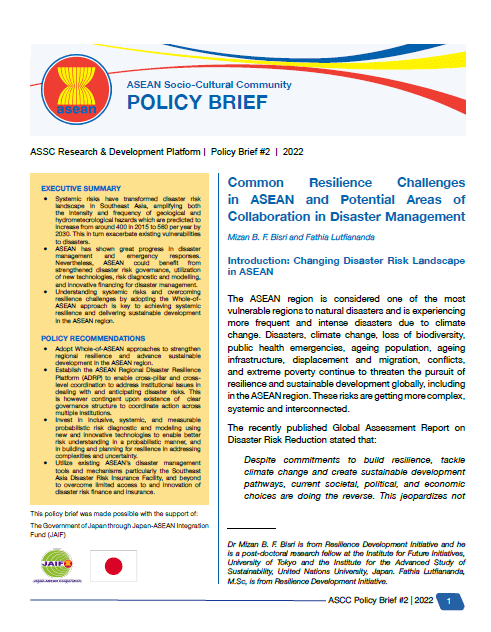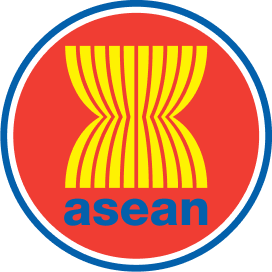

EXECUTIVE SUMMARY
- Systemic risks have transformed disaster risk landscape in Southeast Asia, amplifying both the intensity and frequency of geological and hydrometeorological hazards which are predicted to increase from around 400 in 2015 to 560 per year by 2030. This in turn exacerbate existing vulnerabilities to disasters.
- ASEAN has shown great progress in disaster management and emergency responses. Nevertheless, ASEAN could benefit from strengthened disaster risk governance, utilization of new technologies, risk diagnostic and modelling, and innovative financing for disaster management.
- Understanding systemic risks and overcoming resilience challenges by adopting the Whole-ofASEAN approach is key to achieving systemic resilience and delivering sustainable development in the ASEAN region.
POLICY RECOMMENDATIONS
- Adopt Whole-of-ASEAN approaches to strengthen regional resilience and advance sustainable development in the ASEAN region.
- Establish the ASEAN Regional Disaster Resilience Platform (ADRP) to enable cross-pillar and crosslevel coordination to address institutional issues in dealing with and anticipating disaster risks. This is however contingent upon existence of clear governance structure to coordinate action across multiple institutions.
- Invest in inclusive, systemic, and measurable probabilistic risk diagnostic and modeling using new and innovative technologies to enable better risk understanding in a probabilistic manner, and in building and planning for resilience in addressing complexities and uncertainty.
- Utilize existing ASEAN’s disaster management tools and mechanisms particularly the Southeast Asia Disaster Risk Insurance Facility, and beyond to overcome limited access to and innovation of disaster risk finance and insurance.
Share







